Whether your region requires you to install snow-rated tires during the cold months or you simply want to sport them for added safety, you should know how much a winter tire costs. Many car owners just don’t install winter tires because they believe they’re unaffordable.
While winter tires are typically known to be more expensive, affordable options from growing tire brands like Sailun Tire don’t compromise on the quality and performance drivers expect on the icy roads.
But even the pricer ones are more affordable than your rising insurance premium, likely medical bills, and automotive repairs (not covered in the insurance policy) that you must endure due to an accident in harsh winter conditions.
Here, we will explain the cost of different winter tires and the additional expenses associated with them. If you’re in the market for new winter tires — from value-based to premium — check out our full buying guide here.
Many factors affect the price of winter tires, including brand, type, quality, and size. Since every brand has its own criteria to evaluate the price for its rubber, we would avoid commenting on it. However, we will specifically discuss type, quality and size to give you a fair idea of winter or snow tires.
For a compact car with a famous 205/55R16 size, below are approximate prices.
The three main types of winters you find in the market include studless, studded, and winter performance.
Studdless Tires
For most people, studdless winter tires are a perfect companion in cold conditions. These incorporate biting edges and soft rubber compounds, making them flexible for winter. A standard studdless tire will cost you anywhere between $60 and $550, each.
On average, for a typical compact car, expect to pay around $100-$150 per tire or $400-$600 for all four. For an SUV or light-duty pickup, the price goes up to $200-$400 each or $800-$1,200 for a set of four.
Studded Tires
For extreme weather conditions like freezing rain, sleet and wet ice, studded tires are ideal for a safe driving experience. The metal studs fixed on these tires bite into ice, giving you improved grip and handling. A studded rubber would cost you around $75-$550 or more per tire. For two pairs, you can expect to pay between $300 and $2,200.
There are also studdable options, like the Sailun Iceblazer WST1 studdable performance winter tire trusted by over 1-million drivers in Canada alone, which won’t break the bank yet designed for drivers that demand maximum traction in severe weather conditions.
Sailun IceBlazer WST1 studdable winter tireSailun IceBlazer WST1 studdable winter tireWinter Performance Tires
For guys who do not want to leave their sports cars or performance sedans in their garage in winters, they should put on winter performance tires.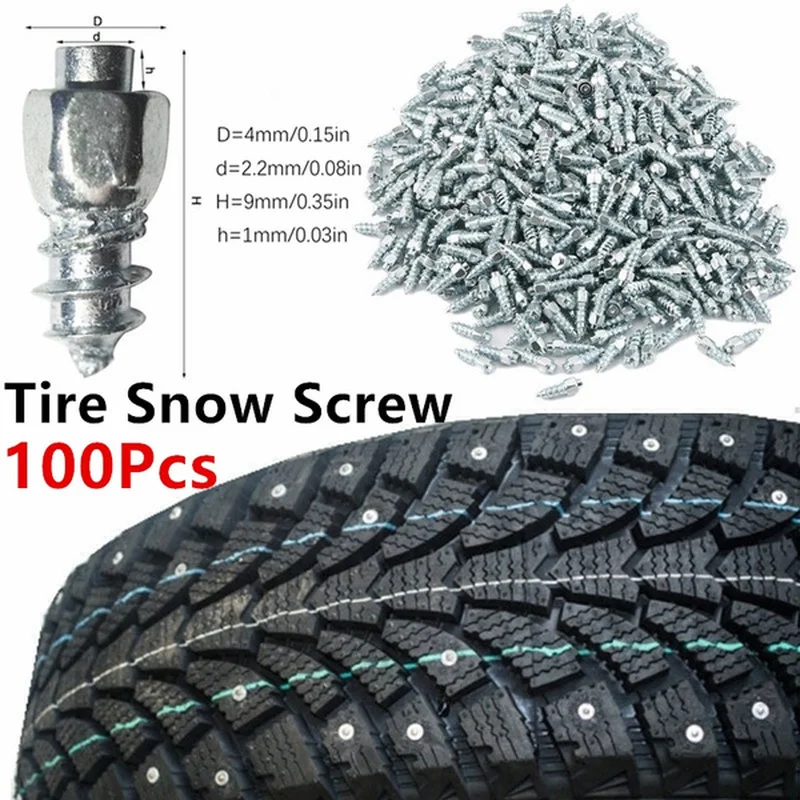 They are designed to offer excellent traction at high speeds on wet and dry roads. However, they are not your perfect companion for ice or snow-packed roads. A regular high performer is available at around $100-$500 each or $400-$2,000 for all four.
They are designed to offer excellent traction at high speeds on wet and dry roads. However, they are not your perfect companion for ice or snow-packed roads. A regular high performer is available at around $100-$500 each or $400-$2,000 for all four.
For all the prices we mentioned above, the smaller the size, the lower the cost. However, the price variation also depends on the tire brand, with American tires selling higher than Chinese-made tires.
The prices we shared above are purely for snow tires; they do not include installation charges. For installation, you have two choices. You can either mount the winter rubber on the existing wheels or buy a new set of wheels for all tires.
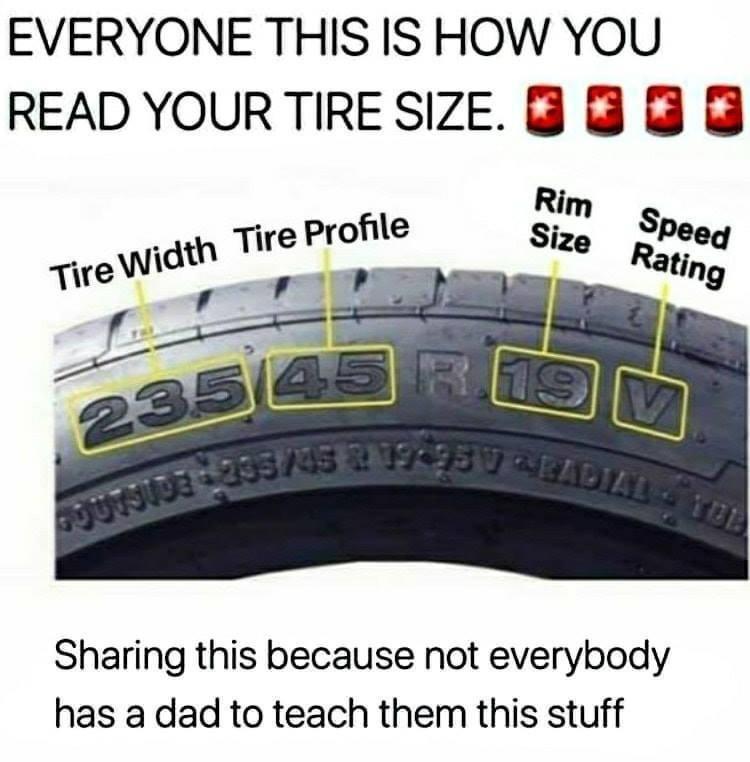 On the other hand, you can buy new wheels for all tires, making it effortless to put on winters when the snow, ice, and slush appear. The four new wheels will set you back $120-$500 or more. You can always try secondhand wheels; they may cost as low as $40-$80.
On the other hand, you can buy new wheels for all tires, making it effortless to put on winters when the snow, ice, and slush appear. The four new wheels will set you back $120-$500 or more. You can always try secondhand wheels; they may cost as low as $40-$80.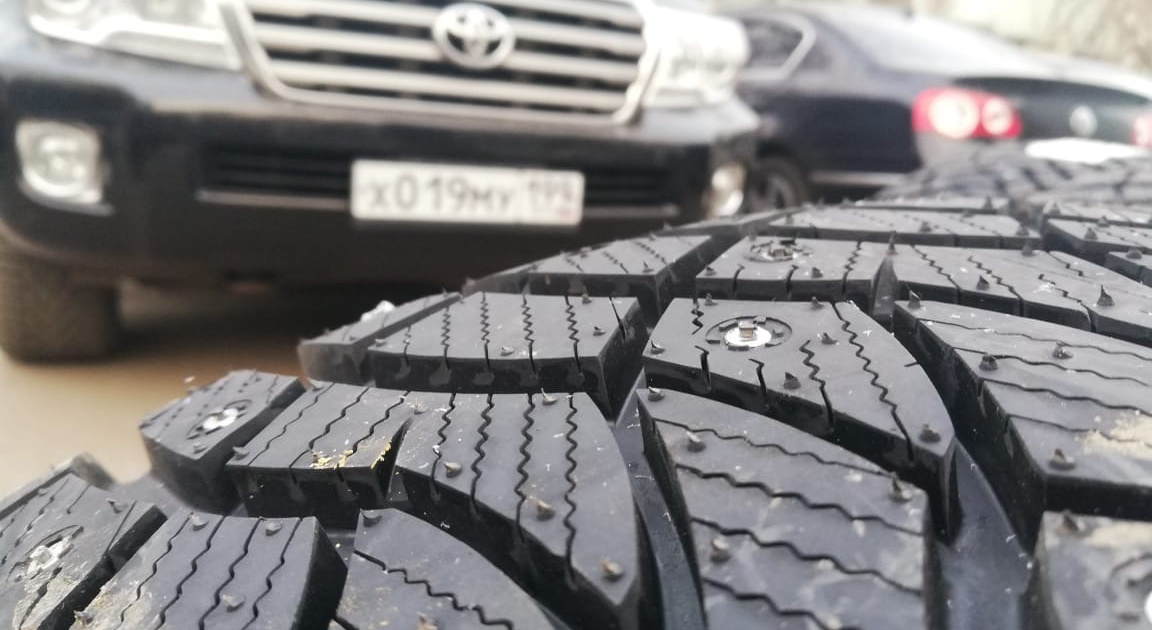
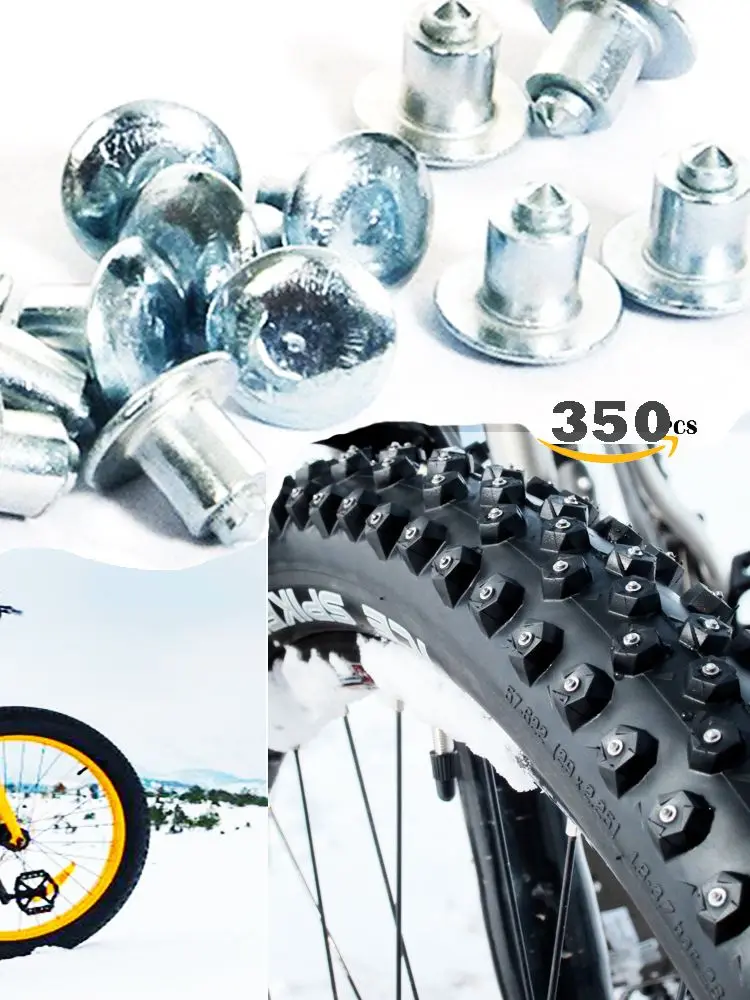 Some retailers provide direct discounts, while others may give you mail-in rebates. You may find them in the shape of gift cards or prepaid cards. The discount amount may vary as per size and model.
Some retailers provide direct discounts, while others may give you mail-in rebates. You may find them in the shape of gift cards or prepaid cards. The discount amount may vary as per size and model. Consumer Reports says that winters tires increase the snow traction by 34%, thus making it easy for you to stop and maneuver the vehicle. These tires actually cut the braking distance by around six feet. That six feet distance is often the gap between you rear-ending a car or drifting into a crossing against carefully coming to a halt without causing a mishap.
Buying the snow tires also enables you to enjoy insurance savings as well as better fuel mileage (if you maintain them well).
Of note, 76% of all Canadians change their all-season tires with snow tires to enjoy better traction and control. Most car owners say that these tires have saved them a possibly dangerous condition.
Do I need to buy winter tires or can I just get snow chains?
What the heck is siping?
When do I have to have studded tires and when will studless do?
If you’re wondering how to pick the right tires for winter, or whether you need them at all, here are answers to the eight most common questions about winter tires.
(A lot of people still call tires used in the cold months “snow tires,” but it’s more accurate to call them “winter tires.” For purposes of this article, we use both terms to mean tires designed for winter driving.)
Winter tires are important for safe driving if you live somewhere that gets snow, ice, sleet or freezing rain and temperatures of 40 degrees or colder. They’re also the right option if you routinely make trips through snow zones or the mountains during the cold months.
They’re also the right option if you routinely make trips through snow zones or the mountains during the cold months.
Learn about the difference between all-season tires and snow/winter tires here.
Some all-season tires have an M+S rating. This stands for mud and snow. These tires have a more aggressive tread design to deliver better traction in a variety of conditions using larger tread blocks and wider gaps between them. The purpose of these tires is to achieve optimal tire life along with good performance in most weather conditions.
But it doesn’t mean they’re adequate for winter driving. In slick conditions, they don’t deliver the traction, control and short stopping distance that you get from a snow tire.
If you want safer driving on packed snow or ice, look for tires made with the right compound and branded with the Mountain Snowflake. This means they’ve actually been tested and certified to perform in winter conditions.
This means they’ve actually been tested and certified to perform in winter conditions.
Wrong. Don’t believe it? See this driving comparison between all-season and snow tires.
If you’re driving on snowy or icy roads, only winter tires will give you good stopping ability and secure handling. This is because they’re built very differently. How?
Different compound. Summer and all-season tires are made with a stiffer rubber compound. This helps the tire retain its shape when it’s rolling on hot pavement. Winter tires are made with hydrophilic (that’s “water-loving”) rubber which stays softer and more pliable in winter weather. This more flexible rubber is one reason you get more traction on snow and ice.
Another reason is tread design. Winter tires have a higher “void-to-lug” ratio, meaning there are larger grooves between the blocks of tread (the lugs). The tread blocks also have irregular, sharp edges.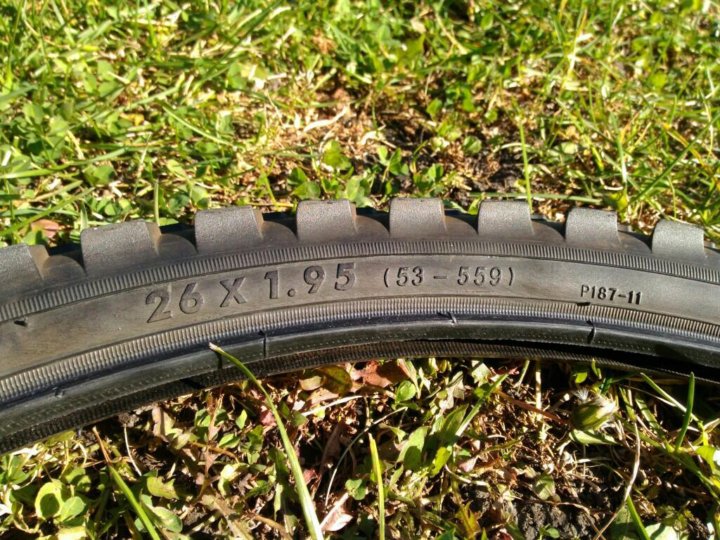
When a tire with wide grooves and biting edges travels over packed snow, it cuts through and scoops some of the snow into the voids on the tire surface, allowing the tread to stay in closer contact with the road. Then the velocity of the tire ejects this snow from the grooves. This is how winter tires provide more aggressive traction than all-season tires.
Most snow tires are already siped, with small patterned slits on the lugs that create extra edges for better road grip. Additional safety siping can be done for a fee on new or used tires. If you’re regularly traveling on slick roads, the added traction from custom siping is a good way to improve starting, stopping and rolling traction.
Before you jump on that set of “lightly used” winter tires on Craigslist, do three quick checks. First, verify they’re the right size. You can look in your vehicle owner’s manual or right on your existing tires’ sidewall close to the rim for the series of numbers.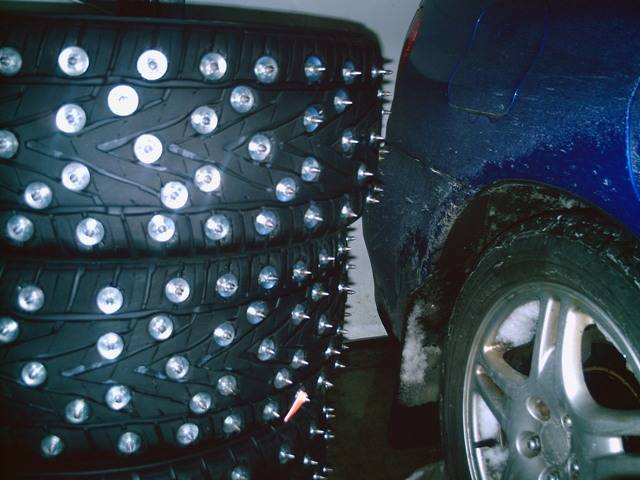 (Here’s a primer on what they all mean.) If you’re not sure the tires you’re considering are the correct size, call a tire dealer and make sure.
(Here’s a primer on what they all mean.) If you’re not sure the tires you’re considering are the correct size, call a tire dealer and make sure.
Second, measure the tread depth by using a tire tread depth gauge. You can pick one up at any auto parts store for under five bucks. Or have a tire store tech do it; it should be free. Take measurements in multiple places in the grooves on each tire.
A new tire typically has 11/32nds of an inch in tread depth. A rule of thumb is that if there are 6/32nds of an inch or less in tread remaining on a winter tire, it’s about to lose a good deal of snow performance. So think carefully about whether you’re going to get what you’re paying for.
Third, be sure there’s not a problem with uneven wear. Did your tread gauge measurements show any tread depth difference between the four tires? It’s really common for tires to wear differently over time. If the disparity between any two tires is more than 3/32nds of an inch, pass on those used tires. Driving with mismatched tires or putting the wrong size on your vehicle will NOT save you money in the long run. You’re risking big repair bills for your transmission.
Driving with mismatched tires or putting the wrong size on your vehicle will NOT save you money in the long run. You’re risking big repair bills for your transmission.
It’s also a bad idea to put winter tires on only the front or back. This creates a big difference in traction between your axles. And this will mean less steering control, not more.
Tire chains can be important — and are sometimes required — for traction when you’re traveling in the mountains or on icy roads. But they’re not made for driving at highway speed or on bare pavement. You risk damaging your chains if you try this.
Don’t think of chains as a substitute for winter tires but as an option you need to have ready when you’re driving on snow.
Depending on the conditions and your state’s rules, traction controls in snowy areas will range from requiring only the minimum — like M+S tires on the drive axle — up to chains on all tires, including all-wheel and four-wheel drive vehicles. Here are California’s chain controls, for example.
Here are California’s chain controls, for example.
The tire dealer will consider your driving habits, where you’re traveling and typical winter conditions in your area when recommending what you need.
Studless snow tires work well on slush and packed snow. They get traction through wide, deep grooves and lots of irregular surfaces with sharp edges. This allows the rubber to cut through snow and grip the road.
Studded tires provide the best traction you can get, even when you're encountering ice or packed snow. Studs are lightweight, small metal spikes that are staggered across the tread. They help break through packed snow and ice-covered roads to give you better traction. Note: Extra tread depth is needed to accommodate studs, so studded tire size options are limited. Also, the times of year when studded tires are allowed on the road vary by state. Here’s a guide to studded tire regulations.
It’s a question of time and money.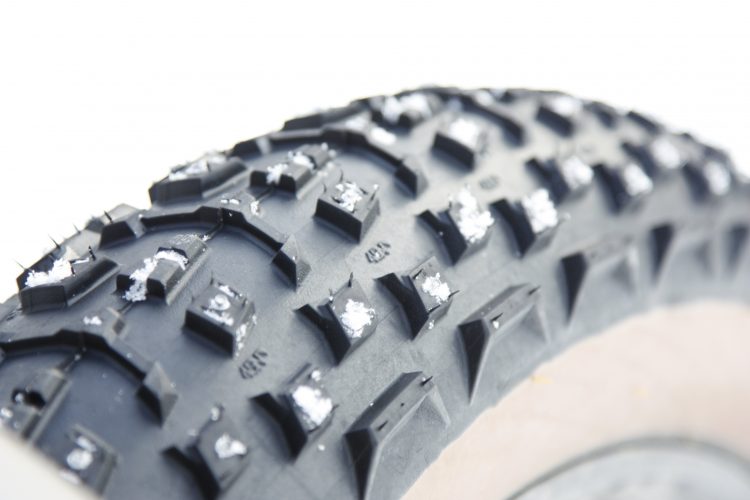 Here’s a way to decide:
Here’s a way to decide:
Also consider the extra wear and tear on your tires that comes with unmounting and remounting tires on only one set of wheels. Especially with low-profile tires, it’s not uncommon for an inexperienced tire tech to damage the inside edge of a tire near the beads, the places where the tire gets pried off and pushed back on.
If you’re leaning toward separate wheels for your winter tires, here are some tips on selecting the best wheel finishes for winter conditions.
Check out tests from the Tire Industry Association in this video to see what the difference winter tires can make.
Some all-season tires are marketed as working equally well in summer and winter. That may be true in dry, mild climates where the seasons don’t vary much. But you’ll only get confident traction, braking and control on snow and ice with a winter tire. If you live in a place with winter weather, you’ll need tires marked with the Three-Peak Mountain Snowflake for safest handling. Because not all tires with a mountain snowflake have a winter compound, ask your tire dealer what you really need.
Want more tips on winter road safety? See 19 Winter Driving Resources You Can’t Do Without.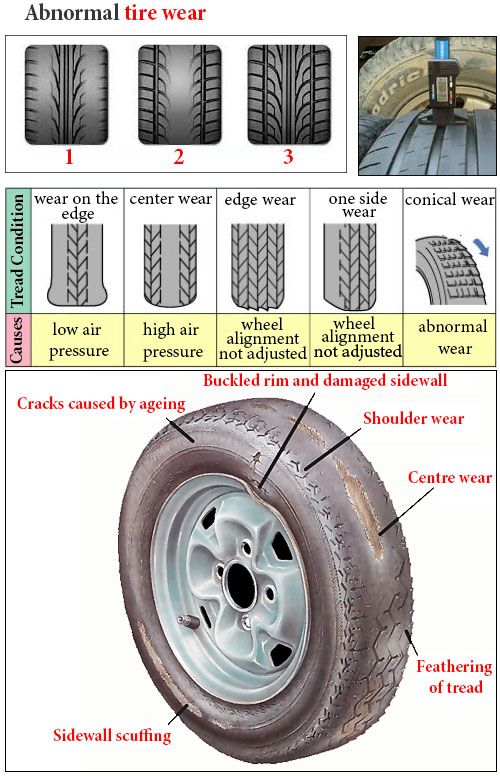
SHOP WINTER TIRES
What are spikes and why are they needed?
Purpose of studs on winter tires
How many studs are on winter tires from different manufacturers?
How many studs are on winter tires of different sizes?
Conclusion
When choosing winter tires for the next year, drivers actively study ratings, expert reviews, reviews of other motorists. In each of these materials, you can find divisions into studded and non-studded tires. In the first case, special attention is paid to the wear resistance of metal inserts. To make it easier to choose the right tires and control the level of durability, attentive drivers sometimes ask themselves the question: “How many studs are on winter tires, and what does this parameter affect?”. In this article we will try to understand the features of modern studding, but it is worth mentioning right away that the exact number of inserts depends on the manufacturer and the specific model.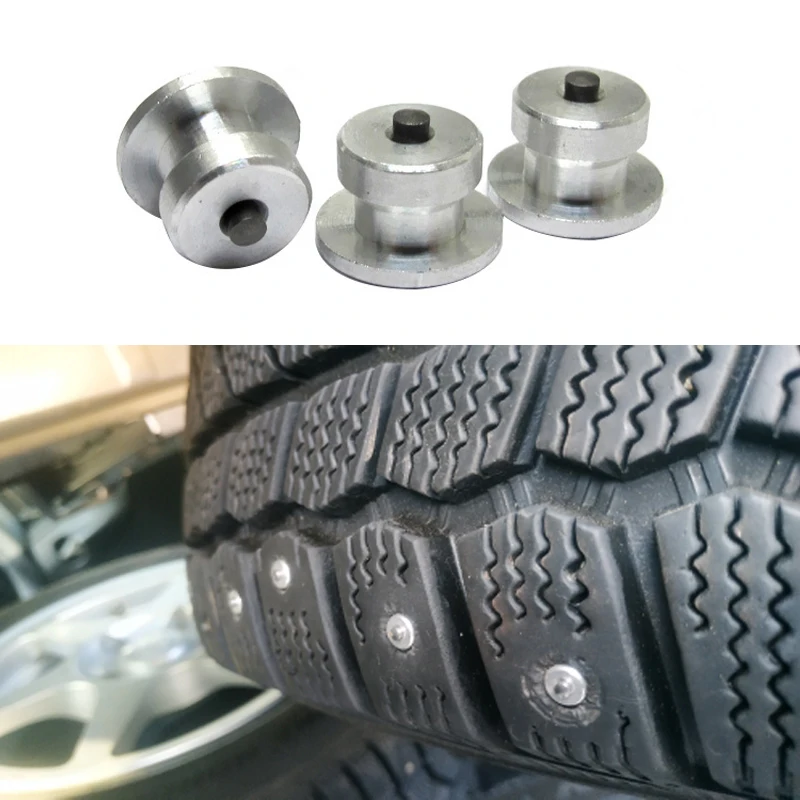
Studs are found exclusively on winter tires and are not allowed for use in every region. Metal inserts can spoil the road surface, and therefore in countries with warm winters they are completely banned.
The spike is a two-piece metal element.
The core of the inclusion or the so-called body. This is the part of the stud that is visible when visually inspecting the tires. The rod is responsible for holding the metal structure in winter tires. This part of the stud is made of light alloy and may have additional serrations that reduce the risk of flying out.
The core of the spike. This bulging part is of the greatest importance, as it provides traction on ice and packed snow.
Winter tire manufacturers are redesigning the carbide insert and body to provide better wear and grip. However, the weight of the spike is limited. In Russia, this parameter should not exceed 1.6 g. For tires manufactured in Finland, there is a stricter limit - 1. 1 g.
1 g.
The tasks of tires used in winter are reduced to the need to cope with snow porridge and mud, provide cross-country ability in deep snow and efficient braking, fast acceleration on ice. To perform the latter function, spikes are used. They work on ice and packed snow, literally biting into the surface.
Obviously, the greater the number of metal inserts in studded tires, the more effective braking and acceleration. However, with the use of new technologies, some manufacturers have managed to achieve good performance with a small number of studs. The car is confidently controlled on a slippery road due to sipes and grip blocks on tires, an improved rubber compound.
As mentioned above, the number of metal inserts is regulated in different countries in their own way. The inclusion of studs in the design of the tire is only allowed in the Scandinavian and European countries. Asian regions do not welcome the use of metal hooks, but some manufacturers from Japan, Korea and China make similar models for import to countries with a cold climate.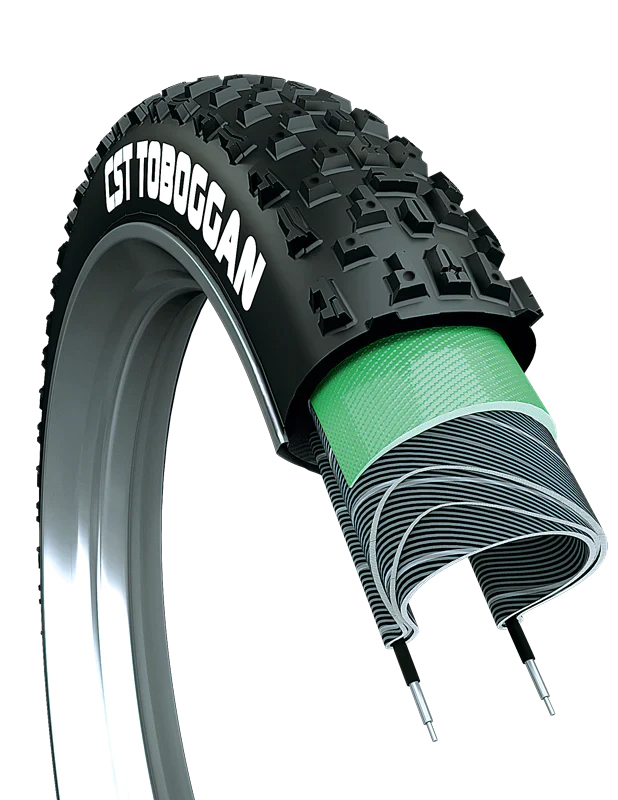 A striking example of such brands is Bridgestone, Yokohama. In various models from Asian plants, a large number of spikes cannot be seen. As a rule, the number of metal inserts does not exceed 130 pieces per tire.
A striking example of such brands is Bridgestone, Yokohama. In various models from Asian plants, a large number of spikes cannot be seen. As a rule, the number of metal inserts does not exceed 130 pieces per tire.
In the Scandinavian countries since 2009 there has been a regulation prohibiting the installation of spikes in quantities of more than 50 pieces per linear meter. However, this regulation has a caveat. A manufacturer can make more studs on their tires if they can prove that it does not harm asphalt and other road surfaces. Finnish brands hold the record for the number of holds. In some models, their number can reach 180 units.
Domestic manufacturers have no restrictions on the number of studs on tires produced. Therefore, in the models of Russian brands, you can find from 130 to 160 metal inserts.
The number of metal inserts ranges from 90 to 190 pieces. The exact quantity is an individual parameter, which is influenced by the design features and the technologies used.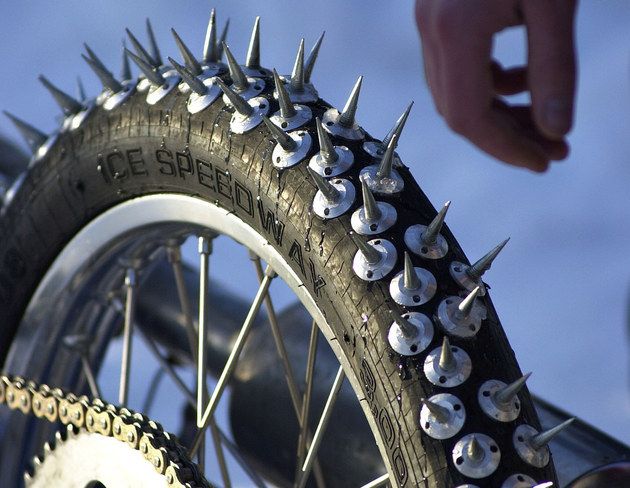
This size is very common among budget cars. On winter tires Nokian Nordman 5 size R13, 110 studs were counted. It is worth noting here that according to generally accepted standards, the number of metal inserts on rubber of this diameter should be up to 90 pieces per wheel, but some manufacturers exceed this figure if it does not harm the road surface.
New cars of domestic production (Grant, Priora and others) are already equipped with R14 wheels, so this size is gradually replacing the 13th diameter. On winter tires Nokian Nordman 4 and 5 also managed to count 110 studs. Cordiant Polar has similar figures. Fewer studs for Gislaved Nord Frost rubber - 90, as it should be by established standards. Nokian Hakkapeliitta 8 - 165 tires became the leader in the number of metal inserts.
If we take the same Nokian Nordman 5, you can see that the number of spikes on the rubber does not change with increasing diameter.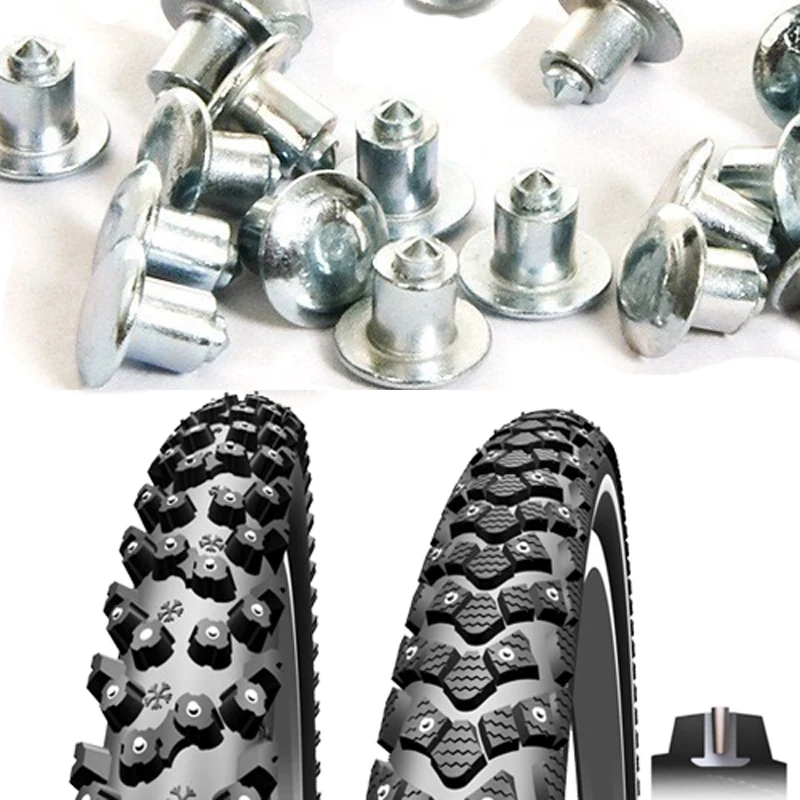 On the R15, in which budget foreign cars and domestic cars of a complete set are “shoeed”, there are still the same 110 pieces. The tendency to keep the same number of studs is also seen in Cordiant, Bridgestone, Gislaved, KAMA.
On the R15, in which budget foreign cars and domestic cars of a complete set are “shoeed”, there are still the same 110 pieces. The tendency to keep the same number of studs is also seen in Cordiant, Bridgestone, Gislaved, KAMA.
This diameter is common among foreign cars of class C. On the Chinese Nexen with a diameter of R16, 108 studs are installed. Nokian Hakkapeliitta 9 has a record number of 172, while Nokian Nordman 4 and Pirelli Ice Zero have 130 each.
This tire is suitable for luxury cars and crossovers. Goodyear has 130 studded 17-inch tires with its UltraGrip Ice Arctic model.
This large size winter tire is used on SUVs and some SUVs. The number of spikes often exceeds 130 pieces. However, there are also models with a limited number. For example, Toyo Tires managed to count 100 spikes.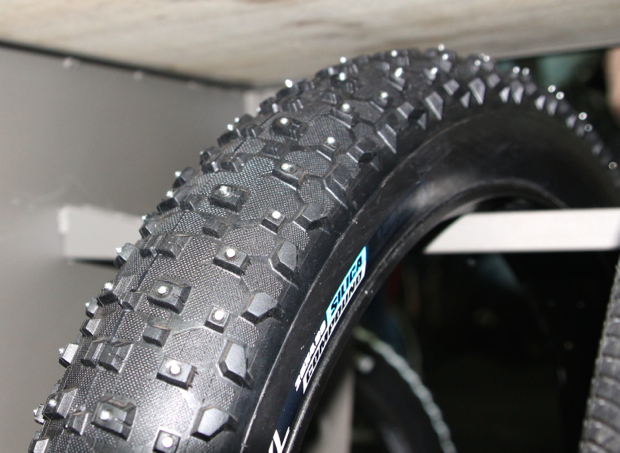
The average number of studs for rubber of different diameters can be found in this table.
| Wheel size | Number of spikes (pcs) |
| R13 | 90-110 |
| R14 | 90-110 |
| R15 | 110 |
| R16 | 100-180 |
| R17 | 130 |
| R18 | 100-160 |
As can be seen from the review of some popular models, tire size has little to no effect on the number of studs.
During operation, winter tires may lose their studs. The rate of wear of rubber depends on the quality of the chosen model and the characteristics of the road surface. According to current standards, studded winter tires can be used even if 40% of the metal inserts are retained. When buying tires for the winter, you should pay attention not only to how many studs are in a particular model and what is the level of wear, but also to other important features:
When buying tires for the winter, you should pay attention not only to how many studs are in a particular model and what is the level of wear, but also to other important features:
patency;
exchange rate stability;
rubber softness;
stability of characteristics in different weather conditions;
hydroplaning resistance and rapid water drainage.
At the same time, it is worth remembering that studded winter tires are noisier and require running in, which will help extend their life. At the same time, spikes are not always needed for a comfortable and safe ride in winter. If you spend most of your time in a city where the roads are regularly cleaned and sprinkled with reagents, it is more advisable to purchase the so-called Velcro or friction tires. The following video will help you understand the intricacies of choosing between studded and non-studded tires:
Beginning motorists often have the question of whether tires need to be run in. The correct answer to that is yes, of course. We will tell you how to break in winter studded tires and other models.
The question of how to break in the wheels of a car has a good reason. At the final stage of the manufacturing process, the tires are covered with a thick layer of a special lubricant. It displaces water, protecting the elastic material from warping and freezing in the winter season. In addition, this composition does not allow the tires to stick together when stored in warehouses and in stores.
If the tires are not run in, their traction may not be sufficient at first. This is fraught with loss of control during high-speed driving or active maneuvering. As a result, tires can fail in an emergency, causing a collision or other accident. The likelihood of such an accident is significantly increased in winter, because the roads are covered with ice and snow, which also reduce traction.
The likelihood of such an accident is significantly increased in winter, because the roads are covered with ice and snow, which also reduce traction.
The most frequently asked question is how to break in winter studded tires. The reason for this is their design features. A tire for an unfavorable winter climate is equipped with metal spikes that are installed in special recesses. With rare exceptions, they are mounted at the final stage of the production process using an automatic or manual probe.
The grooves of studded tires contain a small amount of grease, dust, industrial debris and other foreign particles. In order for the spikes to properly fall into place, they need to be subjected to small loads. Studded tires for the winter season should be run in, which we will discuss in more detail a little later.
Otherwise, spikes will quickly fly out of the tires, which will significantly impair handling on packed snow and smooth ice. But with proper maintenance, they will serve you up to 5-6 winter seasons, depending on the mileage.
 Try to accelerate and decelerate evenly, slow down well in advance before turns, and carefully change lanes between lanes. In winter, drive around deep snowdrifts and embankments: they can hide blocks of solid ice.
Try to accelerate and decelerate evenly, slow down well in advance before turns, and carefully change lanes between lanes. In winter, drive around deep snowdrifts and embankments: they can hide blocks of solid ice. 
The main rule is not to rush. This applies to both speed and recommended mileage. The answer to the question of how to break in a winter studded tire is simple. You should drive on a dry road up to 1000 kilometers at a speed of no more than 60-80 km/h. In winter, such restrictions will be reasonable: they will protect you from a sudden loss of control and significantly reduce the risk of an accident.
It is better to run in studded wheels on smooth asphalt. This means no primers, dirt roads and gravel roads. Even if you own a powerful full-size SUV, studded winter wheels will thank you for choosing a smooth surface.
How to break in tires without studs?
Expert opinions differ on how much to break in wheels. For summer tires, the recommended mileage ranges from 100 to 250 kilometers. But for winter non-studded tires, it can be increased to 500 km.
Some experts believe that summer models should be run in like winter wheels studded with sharp metal parts.